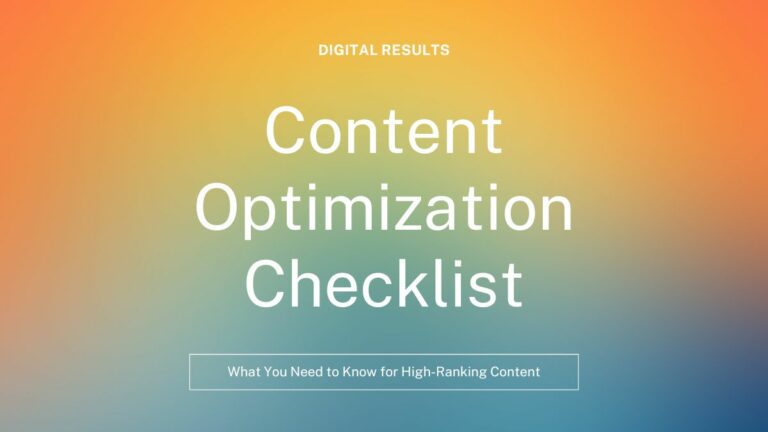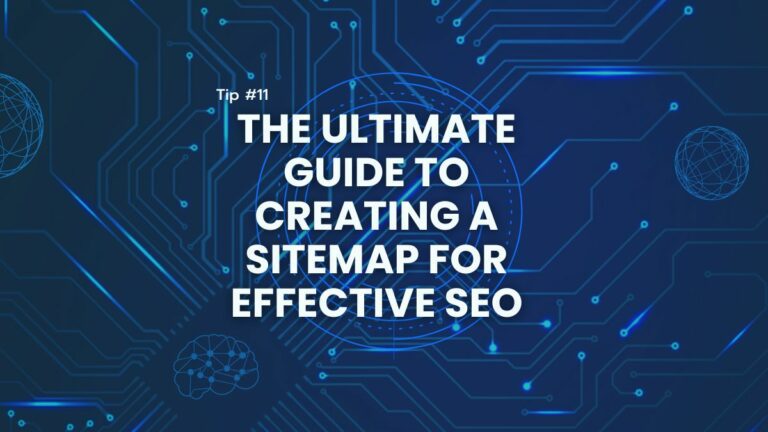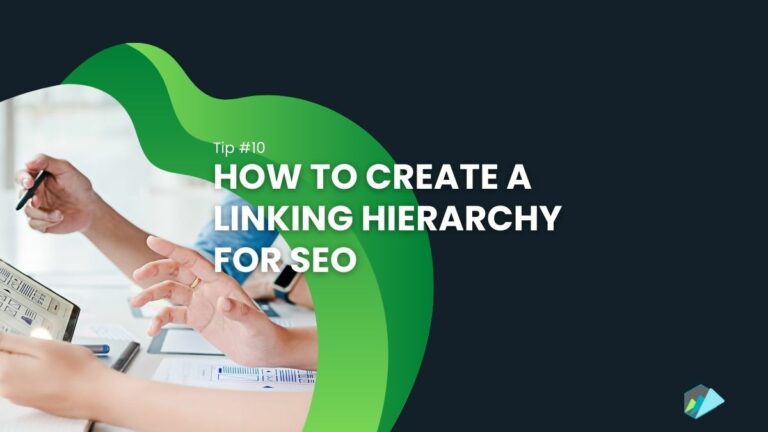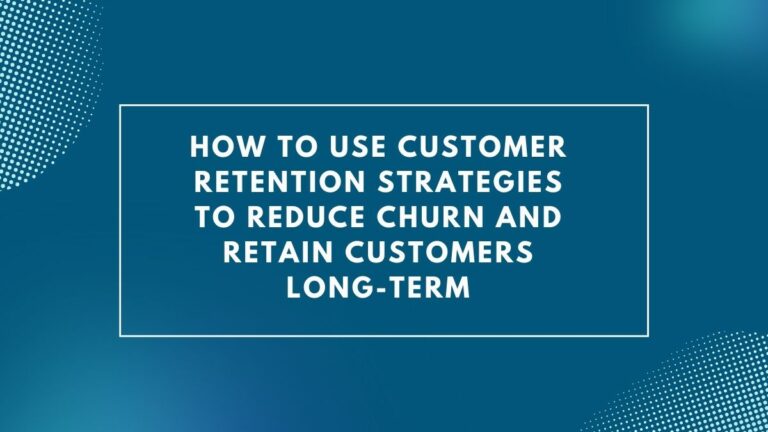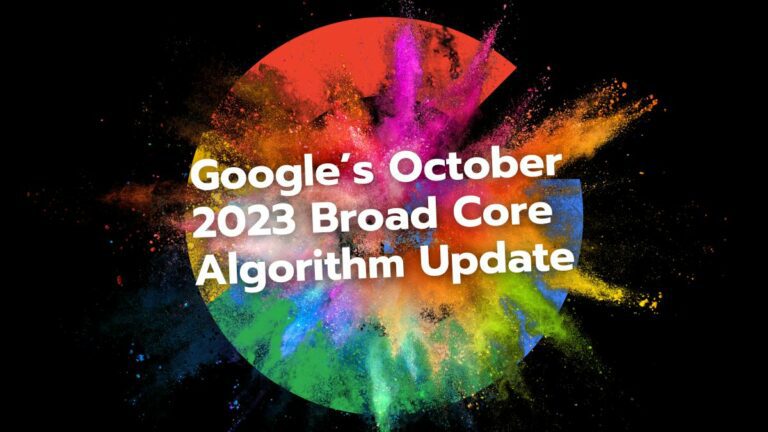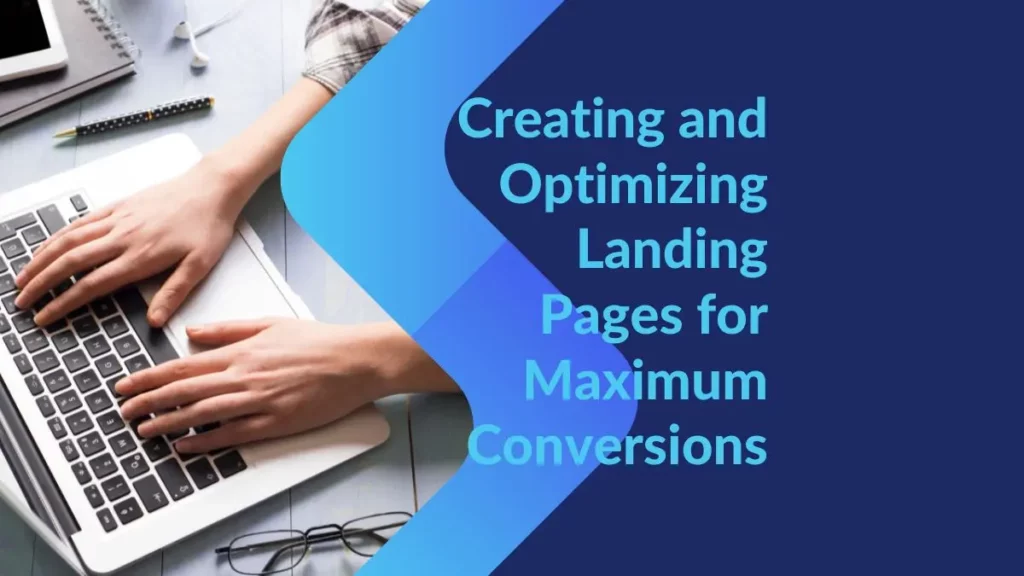
Creating and Optimizing Landing Pages for Maximum Conversions
Optimizing Landing pages is a critical part of any digital marketing campaign. Landing pages are standalone webpages that guide visitors toward taking a specific action, such as downloading an app or purchasing. Unlike a homepage, which serves as an introduction and general overview of a website’s contents, landing pages are designed to achieve specific goals.
Understanding Your Target Audience
To create a successful landing page, it’s essential to identify your target audience. Once you know whom you’re trying to reach, designing a landing page that speaks directly to those people increases the likelihood of conversion.

Defining Your Target Audience
Your product’s target audience comprises demographics, psychographics, and behavioral data. Demographic factors include age, gender, and income level—while psychographics looks at the lifestyle choices that drive our purchasing decisions.
Creating Buyer Personas
Buyer personas are fictional representations of your ideal customer. They allow you to understand the essence of who that buyer is and what they desire, allowing you to create a landing page that addresses those concerns.
Conducting Market Research
Market research can help you gather information about your competition, industry, and target audience. This will give you an edge when creating an outstanding landing page.
Setting Clear Goals When Optimizing Landing Pages
If you want to achieve a specific result, setting clear goals for your landing page is essential. This will help measure success and determine what works and doesn’t. It also ensures that the landing page aligns with overall business objectives.
Defining Goals and Objectives
Your landing page aims to get people to do something specific, like fill out a form or purchase. Objectives are the smaller steps you can take toward accomplishing that direct action.
Setting Up KPIs for Tracking and Measuring Success
Key performance indicators (KPIs) help you track and measure your landing page’s success. They could be anything from conversion rate to bounce rate—and by setting up KPIs, you can identify areas of improvement and make data-driven decisions based on that information.

Crafting a Compelling Headline
A strong headline is critical to the success of your landing page: it’s what visitors see first and determines whether they stay or leave. A well-written headline can even lead to a high bounce rate, which suits your conversion rate.
Techniques for Creating Catchy Headlines
There are many techniques for creating catchy headlines. For example, you can use numbers, power words, questions, or controversy to get your reader’s attention—but they must also be short and sweet. Subheadlines can be used to provide more information about your offer and why visitors should take action. They can also break up large chunks of text for easier reading.
Choosing the Right Images
Images are an essential component of your landing page. They can break up large chunks of text, making the content visually appealing and showcasing your product or service.
Why Images Matter on Your Landing Pages
Images are essential in landing pages because they can evoke emotions, build trust, and visually represent your product or service. They can also help to highlight key benefits and features.
Types of Images to Use
Remember the message you are trying to communicate when choosing images for your landing page. For example, if you are showcasing your product or service, select images that show it in use. If you are trying to educate the viewer on a particular topic, use pictures that help illustrate your point.
Tips for Selecting the Right Images
To choose the right images for your landing page, consider the tone of your page and its target audience. You should also ensure that each image is relevant to what consumers want to buy or sign up for.
Writing Copy that Converts
The copy on your landing page is essential to the success of your marketing campaign. It should be persuasive, informative, and aimed at a specific audience—your ideal customer.
Importance of Persuasive Copy
A persuasive copy can influence a visitor to take action. It should highlight the benefits of your offer, address objections, and create a sense of urgency by addressing any concerns that may be holding back readers from purchasing.
Writing Tips for Better Copy
To write compelling copy, you must know your target audience and focus on the benefits of using your product or service. You should also use persuasive language and ensure readers can scan the text.

Designing an Effective Call-to-Action
The call-to-action is the button or link that prompts visitors to take action. It’s an essential element of your landing page because it determines whether people respond positively and convert into customers.
Call-to-actions increase the likelihood that visitors will take the desired action. For this reason, call-to-action buttons should be prominent and easy to use.
To create effective calls-to-action, use action-oriented language, and make them visually distinctive and relevant to your offer. Here are some tips for creating effective calls to action: Place a call to action above the fold. A landing page should have a single goal, so placing your CTA above the fold is essential. Ensure your page is brief; otherwise, people will lose interest in your offering. Make visitors only scroll down through several paragraphs after seeing your offer.
Using A/B Testing to Optimize Your Landing Pages
A/B testing compares two versions of your landing page to see which one gets more responses. You can use A/B testing to compare different headlines, graphics, and even the order of your call-to-action. For example, you often see two versions of your landing page: one with the original CTA at the top left and another with a different CTA location.
The Significance of A/B Testing
A/B testing allows you to make data-driven decisions, which can improve conversions and user experience. For example, with A/B testing, you can: Test different variations of your landing page to see which one gets more conversions.
Testing different CTAs allows you to find the best location for your CTA and see what works best for your audience. This helps you optimize your landing pages with data-driven decisions instead of guessing what will work best.

Guidelines for Optimizing Above the Fold
Above the fold refers to the portion of your landing page that is visible without scrolling. Optimizing this area is essential because it’s the first thing visitors see.
Focus on the headline, subheadline, and call-to-action to optimize above the fold. Ensure that they are all visible and easy to find without scrolling. It’s also essential to keep your content concise and to the point.
Optimizing for Mobile Devices
Because more and more people are accessing the Internet on their mobile devices, websites must be optimized for those phones. This can be done with responsive design, which allows your website to adjust its layout based on the screen size of the device accessing it. In addition, it’s essential to ensure that your site loads quickly and has a simple navigation scheme.
Importance of Mobile Optimization
Mobile optimization is a valuable strategy that can boost user experience, increase conversions and improve search engine rankings. Google has made mobile optimization one of its ranking factors, so ensuring that your landing pages are optimally designed for the small screen is essential.
Tips for Mobile Optimization
To optimize your website for mobile devices, use responsive design to ensure that it looks good no matter what device is accessing it. Also, ensure the pages load quickly and include large fonts and buttons so users can easily navigate.
Measuring Success
You must measure your landing page’s success to determine whether it is achieving its goals. Consider using analytics software to track the number of visitors who click on your links and how long they stay on the page. You can also use heatmaps to determine where users click and what they’re looking at when they visit your site.
To succeed, you have to monitor your progress to identify what works and what doesn’t.
Metrics to Measure
The metrics you use to measure success will depend on your goals and objectives. Some standard metrics include conversion rate, bounce rate, time spent looking at a page or ad (known as “time on site”), and the number of times users click an ad.


Wrap Up About Optimizing Landing Pages
Landing pages are the first point of contact between a company and its potential customers. Creating effective landing pages is essential to any digital marketing campaign; following these guidelines will help you create landing pages that convert visitors into leads and customers.
Remember to focus on your target audience, set clear goals, and craft persuasive headlines and subheadlines. Choose the right images, write copy that converts—and optimize for mobile devices.
Digital Results is happy to help with your digital marketing needs. Just get in touch for a free 30-minute consultation where our experts will walk you through optimizing your website and landing pages to increase conversions.
Ready to Grow Your Search Engine Results?
Let Digital Results assist you in your SEO strategy and help
deliver the search engine results you need.

